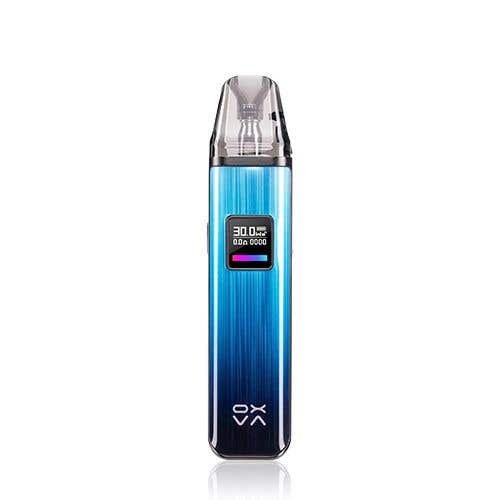The Science Behind Smoke vs Vape: What You Need to Know
The debate between smoking and vaping has been gaining momentum as more people explore alternatives to traditional tobacco products. Both smoking and vaping have become central topics of public health discussions, with many people questioning which is safer, which is more addictive, and which has long-term effects on the body. While Smoke vs Vape has a long-established history of harm, vaping, though often marketed as a safer alternative, has raised concerns of its own. This article dives into the science behind smoking and vaping, comparing their chemical compositions, health effects, and overall risks. Whether you’re considering making the switch from smoking to vaping or just want to better understand the differences, this post will provide the information you need. With data-driven insights and expert opinions, we will explore the impact of these habits on your lungs, heart, and overall well-being, giving you a clear picture of what happens when you choose to smoke or vape.
Thank you for reading this post, don't forget to subscribe!Section 1: What Happens When You Smoke?
- The Chemical Composition of Cigarette Smoke
- Discuss the thousands of chemicals in cigarette smoke, including tar, nicotine, carbon monoxide, and formaldehyde.
- How Smoking Affects the Body
- Explore the short-term and long-term effects of smoking on the respiratory system, cardiovascular system, and the risk of cancer.
- The Addictive Nature of Nicotine
- Detail how nicotine in cigarettes causes addiction and how this impacts brain chemistry and behavior.
Section 2: How Vaping Works
- The Basics of Vaping
- What is vaping? How does it differ from smoking in terms of technology and user experience?
- The Ingredients in E-Liquid
- Discuss the key ingredients in e-liquids: nicotine, propylene glycol, vegetable glycerin, and flavorings.
- Types of Vapes and Delivery Systems
- Explore different types of vaping devices such as e-cigarettes, vape pens, and mods, and how they work.
Section 3: Health Impacts: Smoke vs Vape
- Short-Term and Long-Term Health Effects
- Discuss how both smoking and vaping affect lung function, cardiovascular health, and other organs.
- Cancer Risks: Smoking vs. Vaping
- Present research on how smoking leads to cancer (lung, throat, etc.) and the potential cancer risks associated with vaping.
- Respiratory Damage
- Examine the effects of both smoking and vaping on the respiratory system, comparing the two in terms of chronic obstructive pulmonary disease (COPD), asthma, and lung capacity.
Section 4: The Role of Nicotine in Both Habits
- Nicotine in Cigarettes vs. Nicotine in E-Liquids
- Compare the nicotine delivery in traditional smoking versus vaping.
- Addiction Potential
- Discuss how nicotine affects the brain and its role in the addictive properties of both smoking and vaping.
- Nicotine Withdrawal and Dependence
- Talk about the potential for dependence and how users experience nicotine withdrawal symptoms.
Section 5: The Risks of Vaping: Myths and Realities
- Are Vapes Completely Safe?
- Address common misconceptions about vaping being entirely safe, and the potential risks involved.
- The Health Risks of Flavorings and Propylene Glycol
- Investigate the safety concerns regarding inhaling certain flavoring chemicals and propylene glycol, especially long-term exposure.
- Recent Studies and Vaping-Related Illnesses
- Discuss the outbreak of vaping-related lung injuries (EVALI) and how this has shaped the public’s perception of vaping.
Section 6: The Regulation of Smoking and Vaping
- How Cigarettes Are Regulated
- Explain the regulatory landscape surrounding tobacco products and the health warnings on cigarette packaging.
- Vaping Regulation: Is It Enough?
- Discuss the regulations in place for vaping products, including safety standards and quality control, and how these differ from traditional smoking regulations.
Section 7: Psychological and Social Considerations
- Vaping as a Smoking Cessation Tool
- Examine whether vaping helps people quit smoking and the effectiveness of e-cigarettes as smoking cessation aids.
- The Social Perception of Smoking vs. Vaping
- Explore how smoking and vaping are perceived in society, in terms of stigma, public spaces, and youth culture.
Section 8: Cost Comparison: Smoking vs. Vaping
- The Financial Implications of Smoking
- Break down the costs of purchasing cigarettes on a daily, monthly, and yearly basis.
- Vaping: Is It More Affordable?
- Compare the initial and ongoing costs of vaping, including the price of devices, e-liquids, and maintenance.
Section 9: Making the Right Choice: Smoke or Vape?
- How to Make an Informed Decision
- Offer guidance on how individuals can assess the risks and benefits of smoking versus vaping based on their own health goals.
- Alternatives to Smoking and Vaping
- Highlight other alternatives for quitting smoking and improving health, such as nicotine patches, gum, and behavioral therapy.
FAQs (5-6 Common Questions)
- Is vaping safer than smoking?
- While vaping is generally considered less harmful than smoking, it is not risk-free. Both habits involve the inhalation of substances that can harm the lungs and heart, but vaping has fewer harmful chemicals than cigarette smoke.
- Can vaping help me quit smoking?
- Some people use vaping as a way to gradually reduce nicotine intake and quit smoking, but it’s important to have a comprehensive quitting plan. Consult a healthcare professional for personalized advice.
- What are the risks of using flavored e-liquids?
- Some flavored e-liquids contain chemicals that may be harmful when heated and inhaled. Research is still ongoing, but certain flavorings may pose risks to lung health.
- Does vaping cause lung cancer?
- While there is no definitive evidence linking vaping to lung cancer, the long-term health effects of inhaling e-cigarette vapor are still not fully understood. It is important to weigh the potential risks.
- Is nicotine in vaping addictive?
- Yes, nicotine is highly addictive whether it is delivered through smoking or vaping. Vaping can lead to nicotine dependence, especially if the e-liquids contain high levels of nicotine.
- What is the difference between cigarette smoke and vape aerosol?
- Cigarette smoke contains thousands of harmful chemicals, including tar and carbon monoxide. Vape aerosol, while containing fewer toxins, still includes nicotine and other chemicals that can affect lung health.
Conclusion
In the end, both smoking and vaping come with significant health risks, but they differ in the level of harm they cause. Cigarette smoke is packed with dangerous chemicals that directly contribute to life-threatening diseases like cancer and cardiovascular problems. On the other hand, vaping, while generally considered less harmful, is not risk-free and continues to raise concerns, particularly regarding its long-term effects. For those looking to quit smoking, vaping can serve as a less harmful alternative, but it should not be considered a completely safe option. The best course of action is to reduce or eliminate nicotine consumption entirely through support, therapy, and lifestyle changes. Ultimately, understanding the science behind both smoking and vaping is essential for making informed decisions that prioritize long-term health and well-being. Whether you choose to smoke, vape, or quit entirely, it is crucial to be mindful of the risks and take steps toward a healthier lifestyle.





